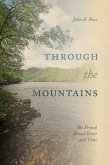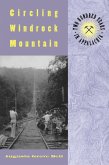The classic environmental history of the Great Smoky Mountains, updated with a view from the twenty-first century
The Wild East explores the social, political, and environmental changes in the Great Smoky Mountains during the nineteenth and twentieth centuries. Although this national park is most often portrayed as a triumph of wilderness preservation, Margaret Lynn Brown concludes that the largest forested region in the eastern United States is actually a re-created wildernessa product of restoration and even manipulation of the land.
Several hundred years before white settlement, Cherokees farmed and hunted this land. Between 1910 and 1920, corporate lumbermen built railroads into the region's most remote watersheds and removed more than 60 percent of the old-growth forest. Despite this level of human impact, those who promoted the establishment of a national park in 1934 represented the land as an untouched wilderness and described the people living there as pioneers.
Toward the end of the twentieth century, Brown writes, the Smokies faced the consequences of decades of management decisions that fluctuated between promoting human tourism and ensuring environmental preservation. Nearly 25 years after the book's first publication, this revised edition discusses current research, citizen science initiatives, and land management practices that are restoring native plants and wildlife populations in the twenty-first century. Margaret Lynn Brown emphasizes the extraordinary treasure that is the Great Smoky Mountains and the importance of continuing to invest in the park's protection for years to come.
The Wild East explores the social, political, and environmental changes in the Great Smoky Mountains during the nineteenth and twentieth centuries. Although this national park is most often portrayed as a triumph of wilderness preservation, Margaret Lynn Brown concludes that the largest forested region in the eastern United States is actually a re-created wildernessa product of restoration and even manipulation of the land.
Several hundred years before white settlement, Cherokees farmed and hunted this land. Between 1910 and 1920, corporate lumbermen built railroads into the region's most remote watersheds and removed more than 60 percent of the old-growth forest. Despite this level of human impact, those who promoted the establishment of a national park in 1934 represented the land as an untouched wilderness and described the people living there as pioneers.
Toward the end of the twentieth century, Brown writes, the Smokies faced the consequences of decades of management decisions that fluctuated between promoting human tourism and ensuring environmental preservation. Nearly 25 years after the book's first publication, this revised edition discusses current research, citizen science initiatives, and land management practices that are restoring native plants and wildlife populations in the twenty-first century. Margaret Lynn Brown emphasizes the extraordinary treasure that is the Great Smoky Mountains and the importance of continuing to invest in the park's protection for years to come.
Dieser Download kann aus rechtlichen Gründen nur mit Rechnungsadresse in A, D ausgeliefert werden.









